Following on from the adventures in the Natural History Museum in London, checking out some of their extant crocs and the material of Theriosuchus pusillus, a dwarf croc from the Upper Jurassic of England, I made a trip to the Royal Veterinary College just north of London to see what they had on offer. John Hutchinson was kind enough to sort things out at short notice, and I actually got to check out what’s in John’s freezer, and see the mighty Freezersaurus! Entombed in icy death, John had everything from turkeys, elephant feet, a whole manner of ‘primitive’ birds (such as ratites), bits of rhino, and a miscellaneous melange of fleshy pseudopodia. All for science. As well as this, there were some living birds, including emus, for live biomechanical testing.
The area John let me work in had so many awesome pieces of equipment. Camera arrays captured the motion of animals in different modes of locomotion, as well as the internal 3D geometry of the anatomy during this. Treadmills with pressure pads detected the different forces applied during different modes of running. It was a scientist’s paradise!
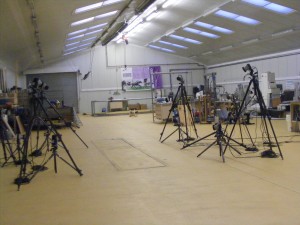
Some of the camera equipment at the RVC, used for tracking biomechanical motion in living specimens (click for larger)
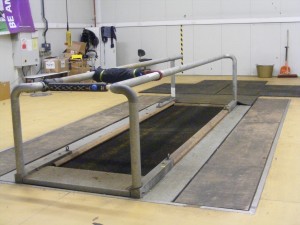
Like any good lab has, a treadmill. This did have a horse on it at one point, hence the ominous brown streak running down it.. (click for larger)
While I was there, a horse was doing some science, or at least being subjected to science. It was cool to see that, as the treadmill it was on sped up, the entire way in which the horse switched locomotor styles changed, from a sort of trot, to a canter, to a full on semi-airborne gallop. The horse did poop itself during this, amplified by the fact that it was on a treadmill, and looked pretty satisfied, almost smug, as the handlers cleaned up after it.
As with the NHM, I was looking at some of the croc skeleton material John had, mostly at several pretty awesome skulls, and many appendicular elements (limb bones, shoulder and pelvic girdles). John had quite a few different species there, and it was cool to see the subtle variations of form (especially in the limb bones) between different types. When it came to the skulls, the differences were pretty striking. One particular species (Melanosuchus) had a long, narrow and flattened snout, and another of similar size (Osteolaemus tetraspis) had a shorter, stouter, and deeper skull. These probably reflect different ways of distributing mechanical forces throughout the skull, due to different feeding styles between the two. (See, for example, this paper).
The big daddy-o of the lot was, without a doubt, the Nile crocodile skull. The apex predator of Africa, its jaws are designed for one thing: attacking and eating pretty much anything that crosses its path. John’s specimen here had been bleached white, which, despite it being dead, managed to make it look pretty eerie still under certain lighting conditions.
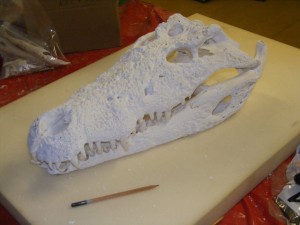
The beast, from a antero-dorso-lateral aspect (my photo skills still need some tuning.. Click for larger)
So, while dinosaurs have kind of diminished over the last 65 million years, into small forms asking for crackers, indiscriminately pooing everywhere, or chirping away at 4am, crocodiles still remain pretty tough out there in the animal kingdom. And they don’t need feathers for that.

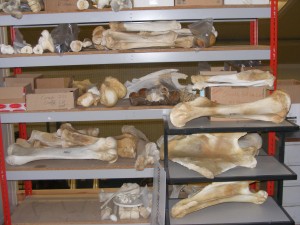
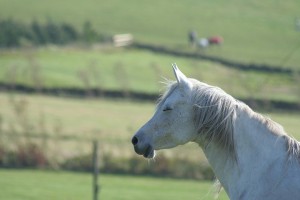
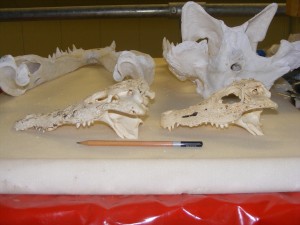
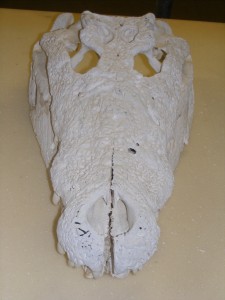
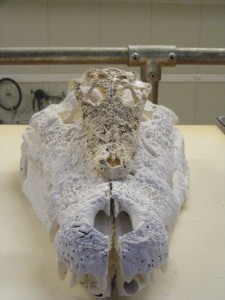
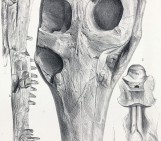
Mike Taylor
Where did you find a pencil six feet long?
They have EVERYTHING at the RVC!